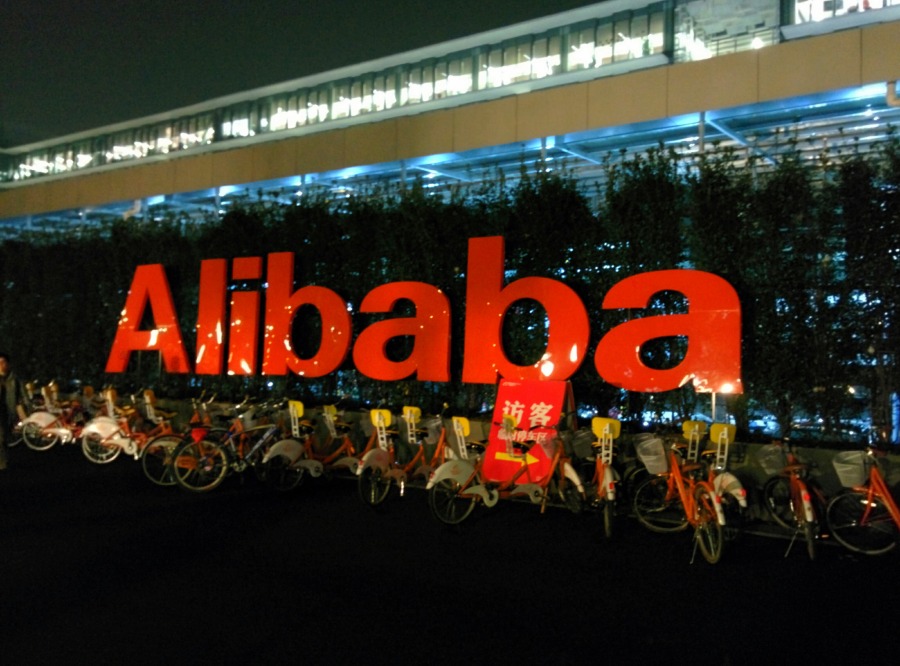Alibaba: The Christmas Rout Brought A Risk/Reward Gift For Bold Investors
- China is still one of the fastest growing economies in the world. Even the weakness provoked crackdown on debt should be a long-term positive.
- E-commerce is still one of the most disruptive sectors in world’s economy, and Alibaba is a giant in this space.
- The current market rout has brought a severe price decline, and a quick reevaluation shows us that the risk/reward proposition has changed considerably.

(Photo credit: leighklotz)
Secular trends support online retail in China
E-commerce has enjoyed the spotlight when looking at the new trends in the retail sector. And, Amazon has become the synonym for online retail. The stock price appreciation is short of impressive and its ticker rests among the hottest right now. On the other end of the spectrum, traditional retail is under siege and investors are backing away from it.
If in the US, online retail is a hot sector, in China, it should be even hotter. The reason for that is that the legacy commercial infrastructure is smaller than the US and, therefore, no constraints to bet heavily on internet retailing.
As China transitions to a consumption-based economy, retail will play a bigger role in the economy. And, in China’s case, given what we said earlier, it will be biased towards online retail.
China’s deleveraging efforts will be rewarded
In addition to the secular trends supporting retail, we also have to consider the current policy framework. The governmental authorities are actively trying to deleverage the economy. In the short term, that is already having a negative impact on the market, but, in the long term, it will strengthen the Chinese economy.
Therefore, the current Chinese macro scenario is one that points toward a sustainable growth of the retail sector, in the long term, with possible turbulence in the mid-term.
Alibaba is fundamentally sound
We have looked at the top-down perspective, now let’s take a look from a bottom-up perspective. To take advantage of the e-commerce secular trends we will use Alibaba (BABA). That’s one of the best known Chinese e-commerce names and one of the most interesting companies out there.
Table 1 – Snapshot figures for Alibaba at year end (31 March 2018)

(Source: Alibaba’s SEC filings)
Looking at margins, Alibaba has a profit margin above 25% and a gross margin close to 57%. That has been recurring and reveals a powerful business model. Additionally, looking at table 2, it becomes evident that commerce is the main contributor to the revenues.
Table 2 – Income Statement as a percentage of Revenue

(Source: Alibaba’s SEC filings)
A bit like Amazon (AMZN), Alibaba is also trying to explore other areas as cloud computing, digital services, and entertainment. But, commerce is still the engine of the company. Bear in mind that, for online retailers, having cloud computing and artificial intelligence assets is vital to have a good run operation. It makes only sense that, once you have the infrastructure, you try to derive revenue out of it.
Be as it may, for our purpose, Alibaba fits our search for a pure play on the Chinese online retail. Alibaba is very well positioned to benefit from secular trends in e-commerce. The 17.5% return-on-equity speaks volumes on behalf of the company’s business model robustness. The current ratio at 1.89 and a low debt-to-assets ratio around 18%, comply with a deleveraging macroeconomic scenario for the Chinese economy.
Scenario analysis for Alibaba valuation in 2020
Starting from the macro scenario above, it is reasonable to expect high double-digit growth in revenues. The company still predicts around 50% revenue growth for FY2019. Additionally, we expect the business model to remain robust, maintaining the current profit margin level. That’s the central scenario and, in our opinion, the most likely one.
Additionally, to provide some color, we also include one pessimistic and one optimistic scenario.
Table Scenario analysis for Alibaba’s valuation (USD to CNY at 6.88)

(Source: Author’s calculations)
In our FY 2020 central scenario, we have dropped the revenue growth a bit, but we still expect the profit margins to hold. That being the case, we value the company at 30 times earnings (lower than the current 40x), which offers a 48% return on the current price. In the pessimistic scenario, we drop revenue growth significantly from the current levels. We’ve also lowered the profit margin and the valuation. Still, the result is a return of -25%. The optimistic scenario revolves around maintaining the revenue growth and slightly improving the profit margin. The valuation reflects that.
Given the current short-term macro scenario, we believe the price will fall somewhere between the pessimistic and normal scenarios. Bear in mind that positive developments around the trade negotiations will likely push the valuation towards the normal scenario. On the other hand, negative developments will depress the valuation, and therefore, converging with our negative scenario.
The current bear market in this stock has made the potential returns seem asymmetric, clearly favoring the upside (between the pessimistic and normal scenarios) by a significant margin. The optimistic scenario is a wild card on the upside, and at the current price, one can argue that investors are getting paid to have it.
For the long-term, Alibaba seems both a good macro and stock picking call. In the short term, the current macro uncertainty isn’t good for most stocks. However, the prevailing market depression is equally punishing many different stocks, and in my opinion, it is the cause of a very interesting risk/reward relationship in this company.



